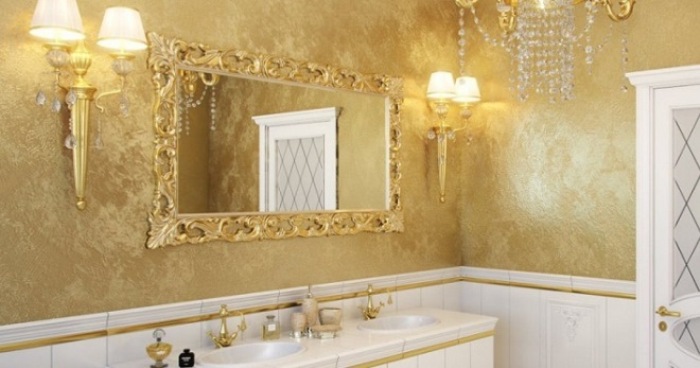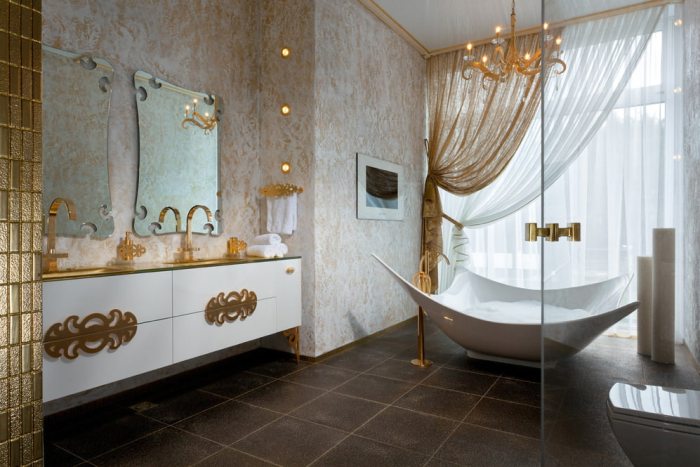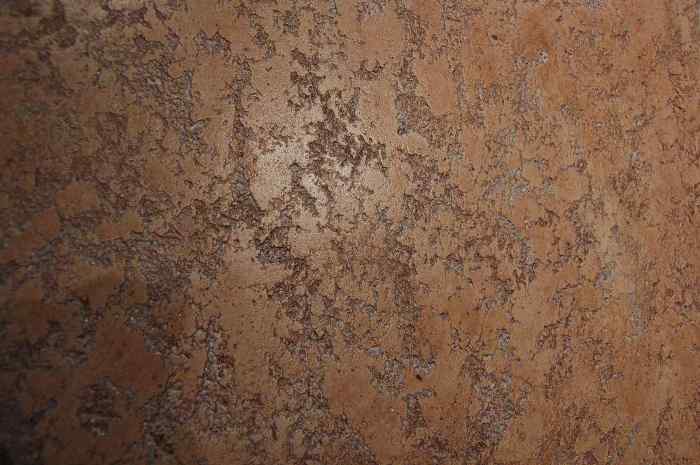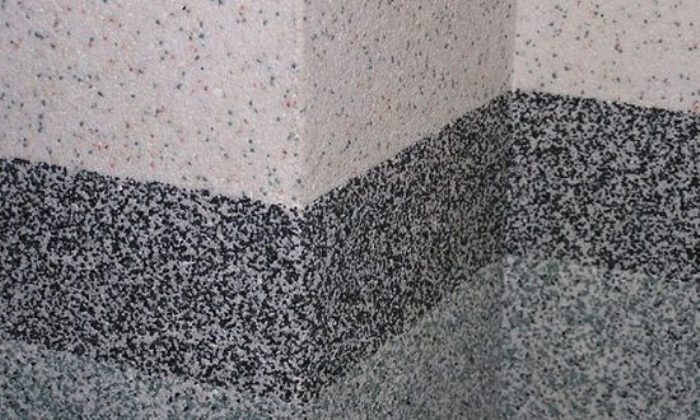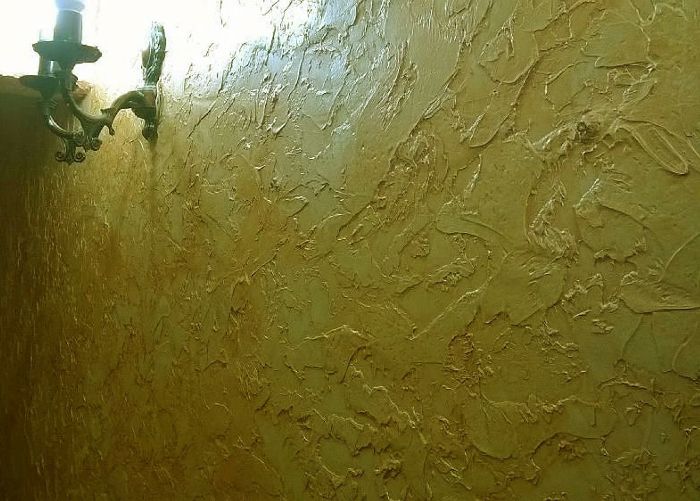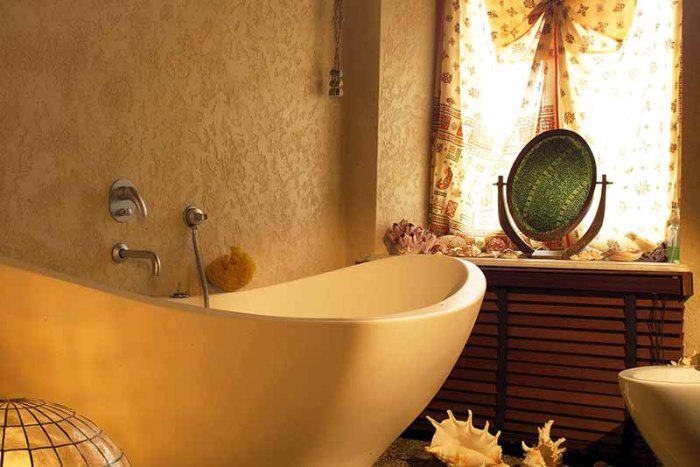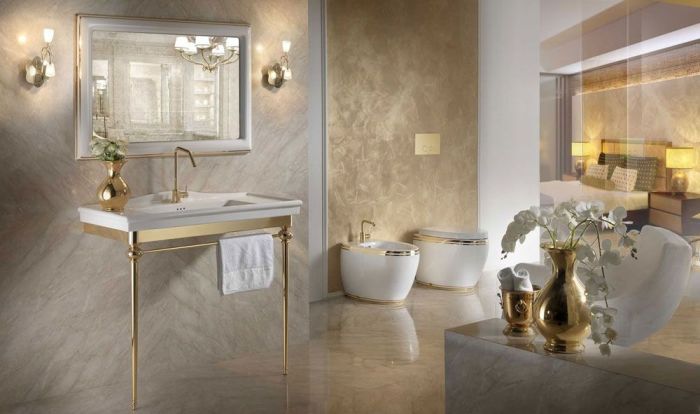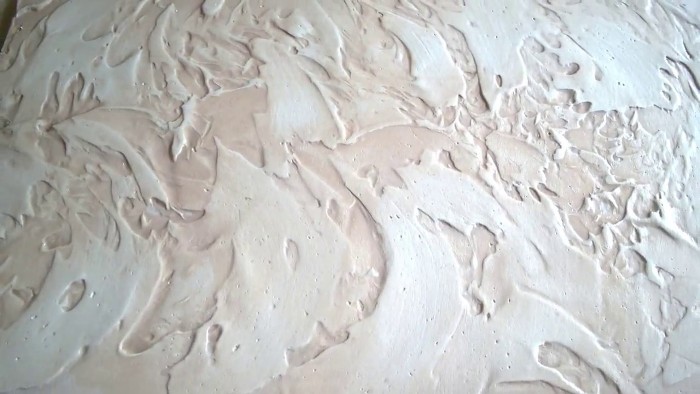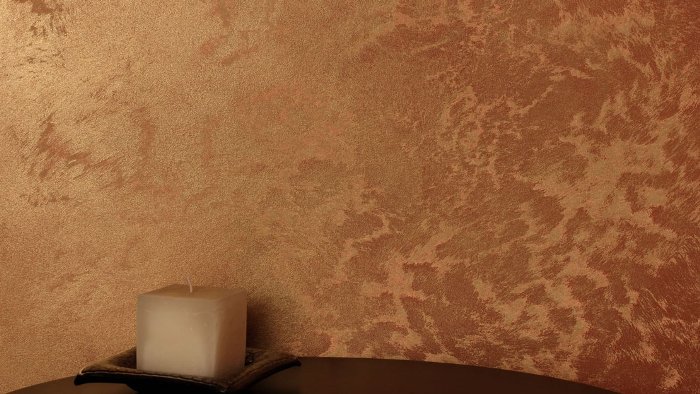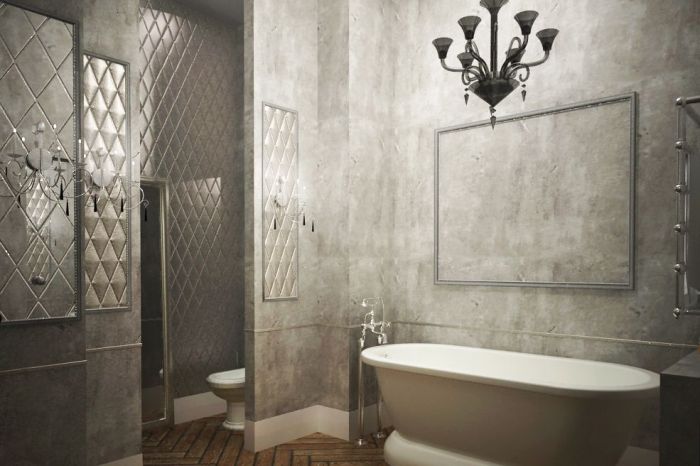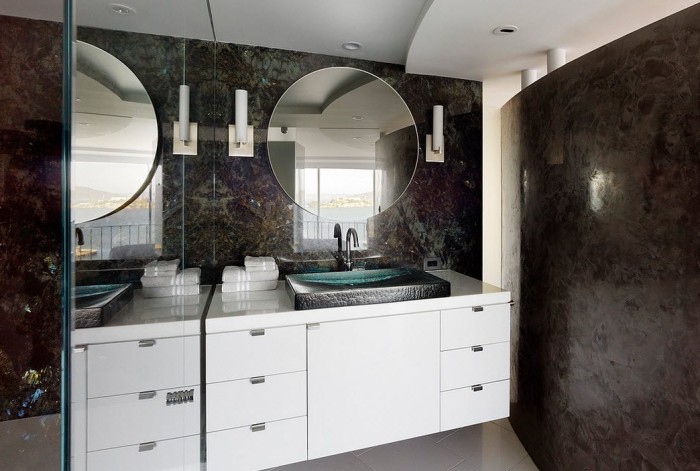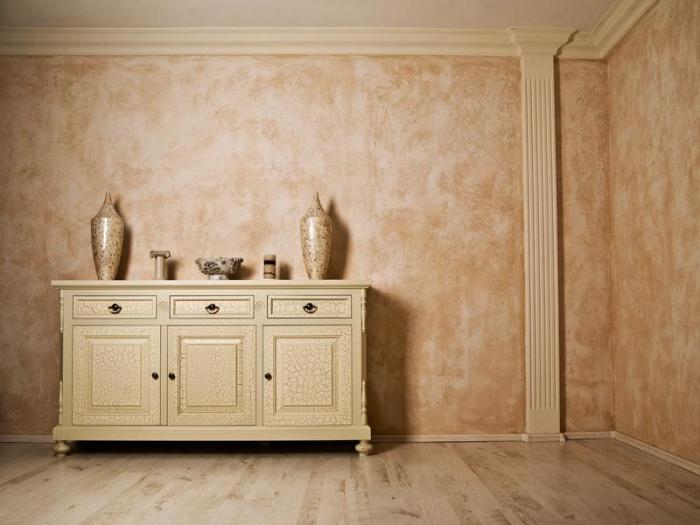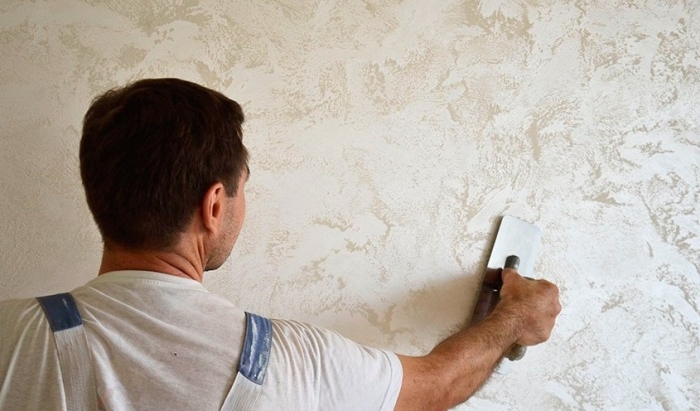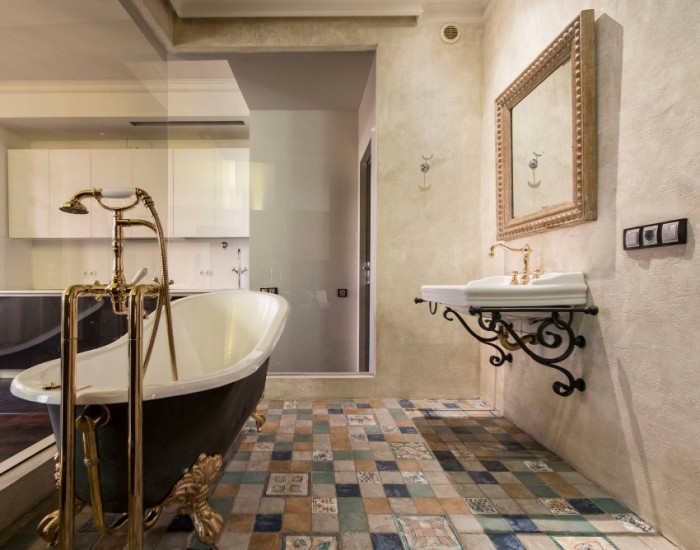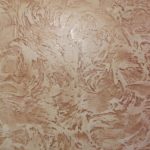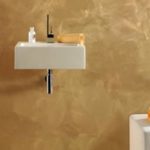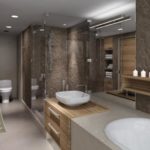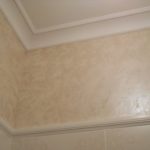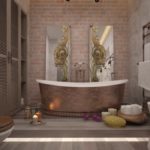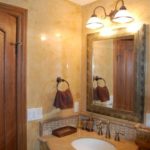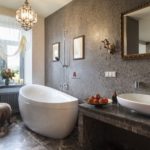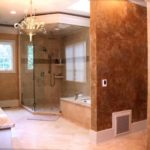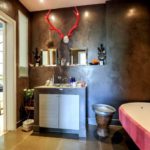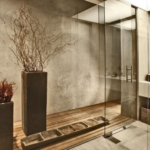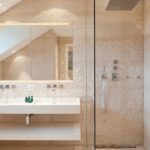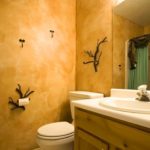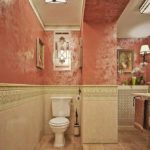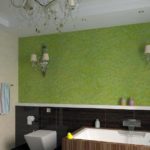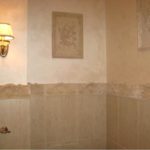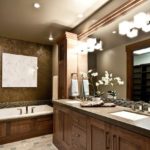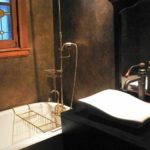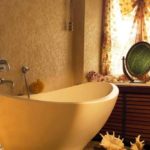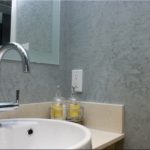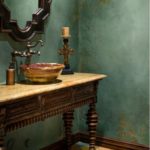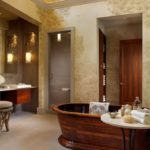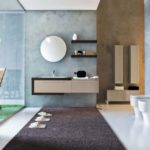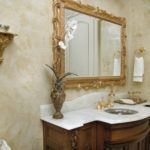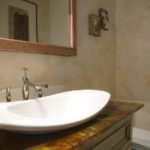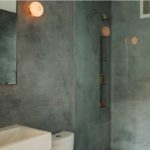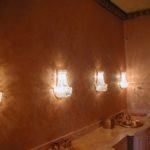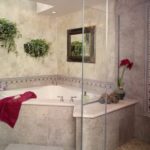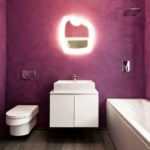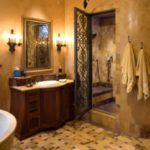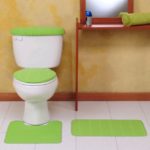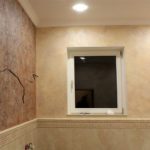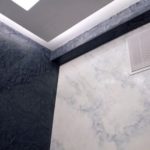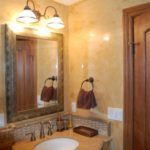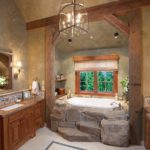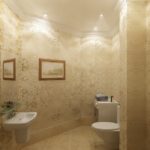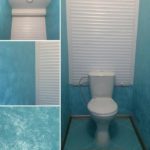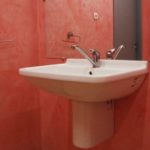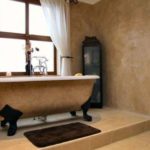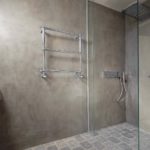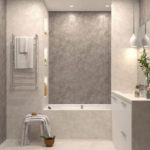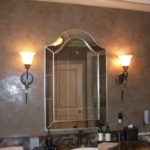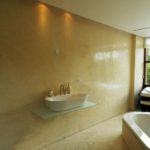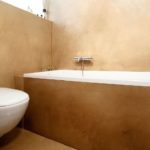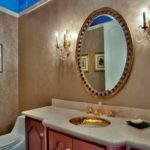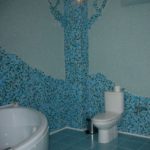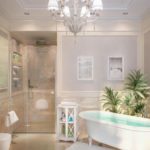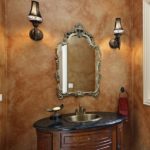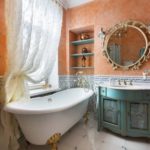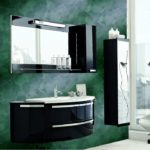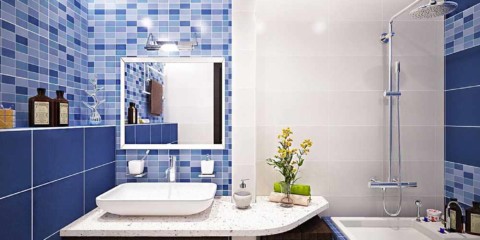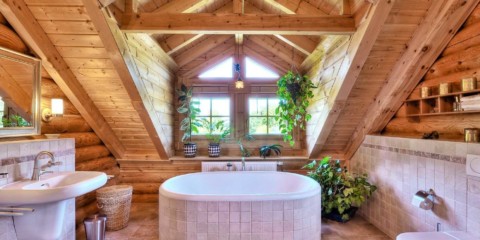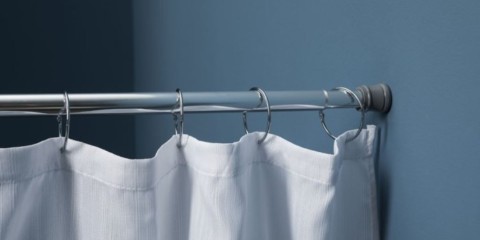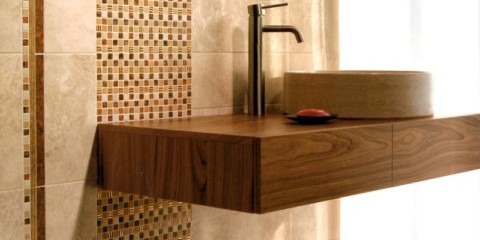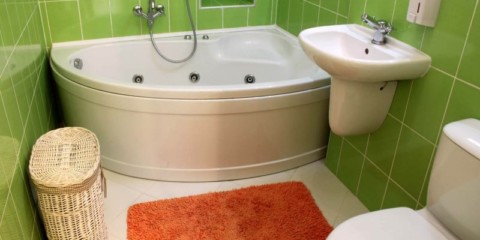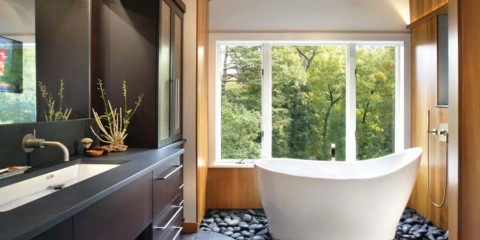 A bathroom
What could be the design of the bathroom, if it has a window
A bathroom
What could be the design of the bathroom, if it has a window
Plastering is a method that is suitable for finishing rooms with high humidity. Determine which plaster to choose for the bathroom will help its composition.
Important! The product packaging must indicate that the product is moisture resistant.
When choosing a material, the features of the room and the combination with the overall design are taken into account. The uniqueness of the style is achieved by a variety of textured patterns, bas-reliefs and 3D-drawings. Using decorative plaster for the bathroom, you can give the surface the effect of antiquity due to scuffs, imitate leather, fabric, stone or wood, make the interior individual.
Varieties
Content
The stucco mix varies depending on the substrate, fillers and texture.
Sanitizing
It has a porous composition, due to which moisture is retained. Serves for application under a decorative layer.
Mineral
It consists of natural components: lime, cement, marble and granite chips. It is purchased in powder form and requires dilution with water. Having a high vapor permeability and moisture resistance protects against the formation of fungi and damage. The plastered surface can be washed using household chemicals, brushes and sponges having different abrasive textures.
Important! To maintain plasticity, a solution is prepared before use. Not recommended for use in places subject to vibration.
Acrylic
Synthetic resins with the addition of ground glass are taken as the basis for this facade plaster. It has strength, elasticity and resistance to cracks. Due to the composition, a textured design is used, using various colors and juiciness. Available in the form of an aqueous solution. When applied, it dries quickly and hardens.
Note! This type of finish has a low air exchange, suitable for rooms with good ventilation.
Silicone
Such decorative plaster in the bathroom is filled with silicone resins. It is suitable for leveling and decorating walls. Silicone and special components that make up the product provide reliable protection against mold, moisture, and prevent the appearance of harmful microorganisms. The mixture is characterized by good vapor permeability, ductility, ease of application, resistance to ultraviolet.
Additional Information! The best plaster for the bath is a solution based on silicone. It has dust repellent properties that contribute to durability.
Silicate
This mixture is prepared on the basis of liquid glass. It promotes oxygen metabolism, does not pass water. The color scheme of products allows you to give the bathroom a special look.
Important! May have toxic properties.
Gypsum
This material contains gypsum and polymer additives. Due to the elasticity in its raw form, it allows you to create a patterned structure.
Attention! Use with caution; plaster is suitable for well-ventilated rooms. Due to its hygroscopicity, it cannot be used in small bathtubs where a lot of steam is formed.
Venetian
Covering used in interior decoration in a classic or antique style. The plaster mass is made from slaked lime, which serves for viscosity. Marble dust is added to it, due to which a marble pattern is created. To give a glossy effect, the surface is waxed. The desired color is achieved by the addition of acrylic pigments.
Additional Information! The mixture is acceptable for families with small children, a smooth texture will prevent from unexpected injuries.
Decorative marbled finish requires high-quality preparation of the walls, removal of all flaws, curved corners and humps, applying a primer. When decorating with Venetian plaster, artistic painting, texture in the form of natural stone, various color options are applied. The pattern depends on the size of the particles filling the solution and on the stencil used.
The most suitable types for the bathroom are: silicone, sanitizing and Venetian plasters.
Additional Information! After drying, the plane becomes more expressive than when applied.
Benefits
The main positive characteristics of all decorative types of plaster include:
- moisture resistance;
- protection against mold and mildew;
- durability;
- vapor permeability;
- air exchange;
- high adhesion;
- ease of application;
- simplicity in leaving;
- durability;
- antistatic effect;
- design individuality;
- combination with other surfaces;
- not destroyed by ultraviolet rays;
- keeps warm;
- reasonable prices.
Carrying out plastering work, it is necessary to adhere to certain rules. Coarse-filled mix is applied manually. The composition is diluted with the components indicated in the attached instructions. People without experience and skills in this area should contact a professional.
Selection recommendations
When choosing facade plaster, you need to make sure of the environmental properties of the material, in the absence of chemical compounds that can cause harm during operation.
All materials for the repair of the bathroom must be moisture resistant. This condition will help to avoid the following negative consequences:
- peeling;
- black spots;
- bubbles.
The type of finishing material affects the duration of the work. If there is no time limit, cement-based plaster can be used.
In well-ventilated areas, gypsum mixtures are available. In the future, they can be tiled or decorated.
For speedy design, it is better to choose acrylic compositions that dry quickly. A rough relief with grooves requires the use of a composition with hard granules. A uniform roughness is obtained with a soft sponge.
After covering the finish layer, the use of the bath is prohibited for 2-3 days.
Finishing materials are durable, therefore, it is necessary to take into account possible changes in the interior associated with the updating of plumbing and the addition of missing elements in the future.
Decorative coating in the bathroom
